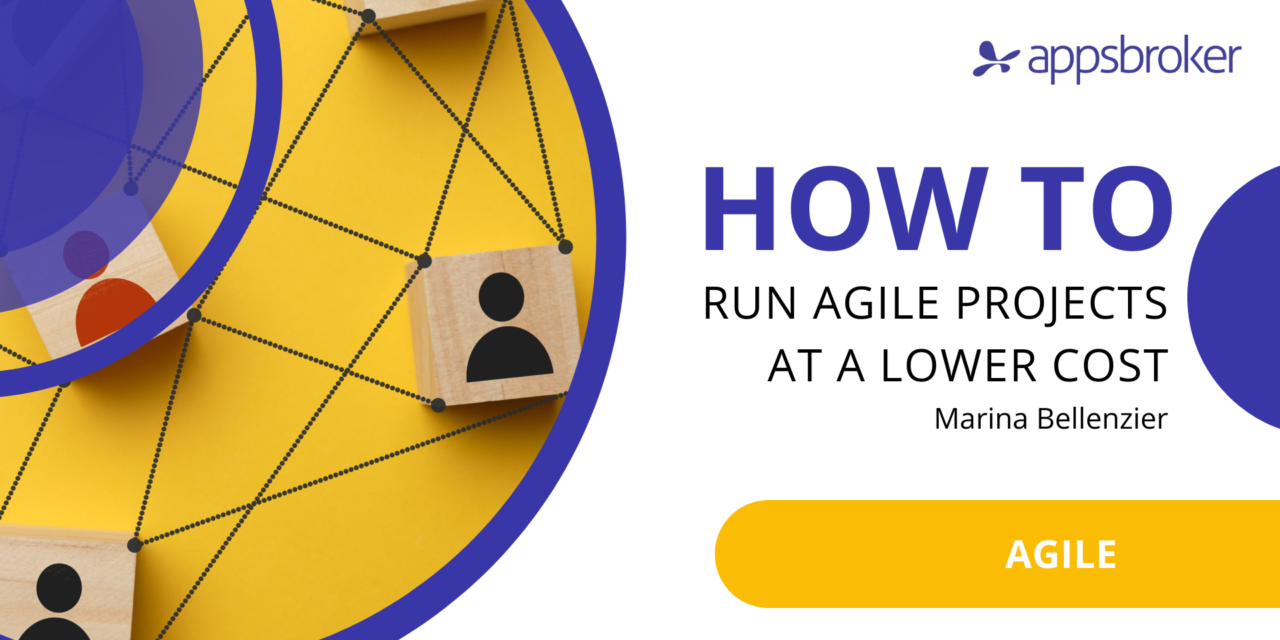The modern marketplace is constantly evolving, demanding more agility, and a faster return on investment. Adaptive methodologies provide small development cycles that are quick and iterative, making it easy to rapidly switch to alternative solutions with low cost.
Traditional methods often have a higher cost of change due to the lack of frequent communication. This blog discusses best practices we use to be more effective working, and how Appsbroker further reduces the costs of our projects by utilising the Systems Thinking approach.
At Appsbroker, we work with our customers, not for our customers, by acknowledging that their success is our success. Our main goal is to create a partnership with our customers, and to deliver value effectively and at a lower cost, maximising their potential for profit.
Throughout our Agile projects, we keep the level of engagement with our customers as high as possible, resulting in a better understanding and exploration of the problem, allowing our team to find the best solution.
How Can Systems Thinking Dramatically Reduce Cost?
“Systems thinking is a set of synergistic analytic skills used to improve the capability of identifying and understanding systems, predicting their behaviours, and devising modifications to them in order to produce desired effects. These skills work together as a system.
– Ross D. Arnold, Jon P. Wade
In our first blog post, How to Make your Discovery Sprint Awesome, we discussed the importance of getting off to a good start.
System Thinking is a process where you break down a complex problem into its individual parts, and then identify how these parts interact with each other, and how the system as a whole is expected to perform. Doing so will help in coming up with solutions that are tailored specifically to the problem at hand. It is an effective way of problem solving, and can be applied in a variety of fields, including business, engineering, and mathematics.
In IT, in order to simplify complex systems, we tend to specialise in sub-systems, or parts, that are easier to learn and manage. In doing so, we run the risk of over-specialising and not seeing the wood for the trees.
How will Systems Thinking benefit you
This picture summarises what could go wrong if we are not system aware. When we focus on local optimisation and ignore the global impact, we create more problems for the future. Systems Thinking teaches us that to avoid these traps, we must empower teams to sacrifice local goals in the service of global goals, aligning the two.
In our projects, we work with our customers in order to understand and determine the points of greatest leverage, e.g. places in the system where small changes can produce important results. In addition, a systemic characteristic is the ability to maintain stability through feedback.
No matter what your thoughts, feelings or experiences are when evolving Agile frameworks, it’s clear that Systems Thinking is one of the most effective ways to deliver value, and is embodied in the idea that “the solution is a system, one whole.”
Why everyone needs to be encouraging systems thinking in their business
Although common goals or solutions are at the heart of organisational systems, it is common for separated projects to be so focused on themselves that they become less aware of the whole. These teams are often oblivious to the fact that they are detached, and are operating “selfishly and competitively, working together to destroy the system.” This division can insulate the team from other areas of the business or systemic influences (both good and bad).
The way we combat this problem is to dissolve the lines between the larger system and our Agile teams working on smaller projects. We do this by placing greater emphasis on recognising and understanding how the overall system influences these projects. Conducting an Awesome Discovery Sprint (where anti-patterns are ranked at both the team and the system level) encourages teams to determine the points of greatest leverage with respect to the solutions they develop.
Final Thoughts
Systems Thinking offers a range of tools for gaining deeper insight into problems, from simple causal-loop diagrams and systems archetypes to more complex computer simulation models. This approach is necessary for projects and business as well as engineering. Every problem we face is multi-faceted, interrelated, non-intuitive and time-delayed – so cause and effect can become unclear.
With this, better decisions can be made on the addition or modification of solutions based on how they affect the overall system and business.
Once we use Systems Thinking to run our Agile projects they become cheaper; low-value work is pruned away: meaning our time is spent completing valuable tasks only. This implies that “building what our customer said we’d build” isn’t the ultimate measure of success. Instead, “building what they need” becomes the measure.
Finally, when holding a broad vision of the system, there is less rework needed to meet requirements. By working collaboratively with our customers and stakeholders to collect more information about their pain points, the requisites can be more accurately executed. This ensures the chance of building the wrong thing – and wasting time doing so – is far, far smaller.











